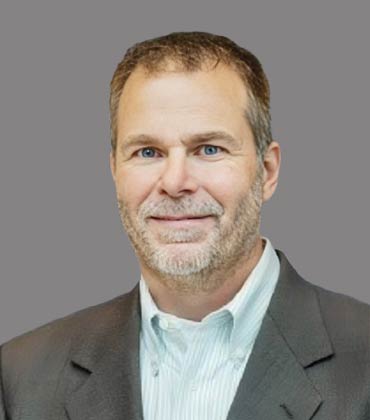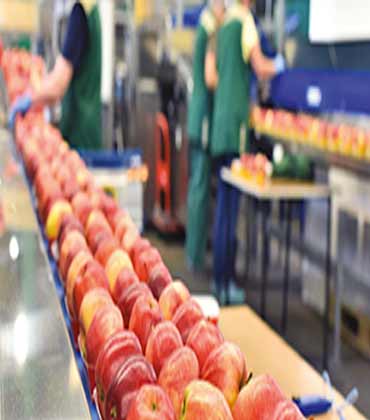THANK YOU FOR SUBSCRIBING
By Todd Jongen, Director Non-Foods Product Development and Packaging Science, US Foods
A Brief History of Carry-Out Food Packaging
By Robert Erhard, Head of Dairy, Corporate Sustainable Agricultural Development, Nestle
Transforming the Food Industry Through a Sustainable...

Elevating Food Safety Across Borders
Adeniyi Odugbemi, Global Director, Quality and Food Safety, ADM

 Adeniyi Odugbemi, Global Director, Quality and Food Safety, ADM
Adeniyi Odugbemi, Global Director, Quality and Food Safety, ADMShaping Leadership Through A Cross-Functional Food Safety Journey
My professional journey, spanning food manufacturing operations, regulatory affairs, and food safety, has fundamentally shaped my leadership approach at ADM. Each stage of my career has reinforced the importance of cross-functional collaboration, attention to detail, and a proactive mindset, particularly about food safety and quality.
At ADM, I strive to lead by example, promote a culture of continuous improvement, and empower teams to take ownership of food safety. Strong leadership in this space is about creating systems that work and building trust with both internal teams and external partners.
Where Strategy Meets The Plant Floor
As Global Director of Food Safety, balancing strategic leadership with operational complexity requires a top-down and bottom-up approach. I rely on a few core principles and frameworks to maintain this balance: Culture of Food Safety, as well as Continuous Improvement, are my watchwords.
Risk-Based Thinking: We prioritize resources and actions based on risk. This approach aligns with regulatory frameworks like FSMA and GFSI and ensures we're addressing the most critical food safety threats proactively, not reactively.
Empowerment Through Training and Culture: We invest heavily in training for technical skills and cultivating a food safety culture. Empowered teams are better equipped to handle complexities on the ground.
Strategically, I work closely with cross-functional leaders, operations, procurement, quality, and R&D to embed food safety into every stage of the supply chain. It's not a standalone function; it’s a shared responsibility.
Consistency Without Compromise
One of the most significant challenges in leading global food safety initiatives is driving consistency across diverse geographies while respecting local nuances, whether regulatory, cultural, or operational. What works well in one region may not translate directly to another, yet the expectation for food safety excellence remains the same everywhere.
“What works in one region may not translate directly to another— yet the expectation for excellence in quality and food safety remains the same.”
Another major challenge is aligning food safety priorities with fast-paced commercial goals. In a global organization, there's often pressure to move quickly, launch new products, or optimize operations. Strong cross-functional collaboration and influence are needed to ensure that food safety is embedded into those conversations early and not treated as an afterthought.
I’ve Addressed These Challenges By:
Building global frameworks supported by local ownership. We set clear global expectations aligned with GFSI, Codex, and regional regulations, and we also engage local teams to co-develop implementation plans. This creates ownership and ensures practical execution.
Leveraging data and risk-based decision-making is key in the developmental milestone. We use data analytics and trending tools to prioritize interventions and demonstrate the value of preventive controls. This also helps align food safety priorities with business objectives.
Innovating For Impact, Not Just Compliance
At ADM, we’ve implemented several food safety innovations and process improvements that have significantly enhanced team performance and operational outcomes. One of the most impactful has been the transition to a risk-based, data-driven food safety management system.
Another major improvement has been the development of a global food safety training platform, tailored to various roles across the organization. It combines core regulatory requirements, scenario-based learning, and cultural reinforcement. This has improved audit readiness and empowered frontline teams to take ownership of food safety, resulting in faster response times and better documentation.
Additionally, we established a Global Food Safety Network, which connects site leads across regions to share best practices, troubleshoot challenges collaboratively, and align on standards. This peer-driven model has strengthened consistency and helped elevate local capabilities across our global footprint.
Finally, we’ve streamlined our CAPA (Corrective and Preventive Action) process, integrating root cause analysis tools and tracking systems to ensure accountability and follow-through. This has improved closure rates and reduced repeat issues, especially in high-risk areas.
These innovations are not just about compliance—they’re about creating a sustainable food safety culture that drives excellence and continuous organizational improvement.
The Future of Food Safety is Cultural, Not Just Technical
One core philosophy guiding my leadership is the belief that food safety is everyone’s responsibility, not just a function, nor is it a role-based approach. I strive to build systems that are technically sound and culturally embedded, where accountability, transparency, and continuous learning are part of the daily mindset at every level. A project I’m particularly proud of is leading a global cross-functional team to harmonize our food safety and quality programs across all regions. This initiative significantly reduced variability, improved audit performance, and strengthened customer confidence. In everything I do, I aim to bridge strategy and execution, balancing regulatory rigor with operational practicality— ensuring we protect our consumers and brand.
Read Also















